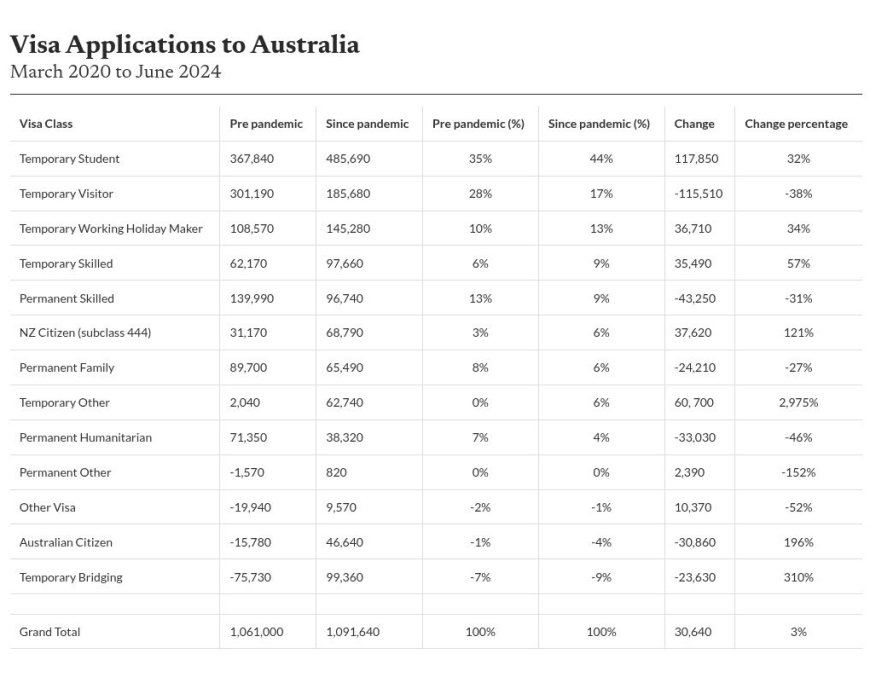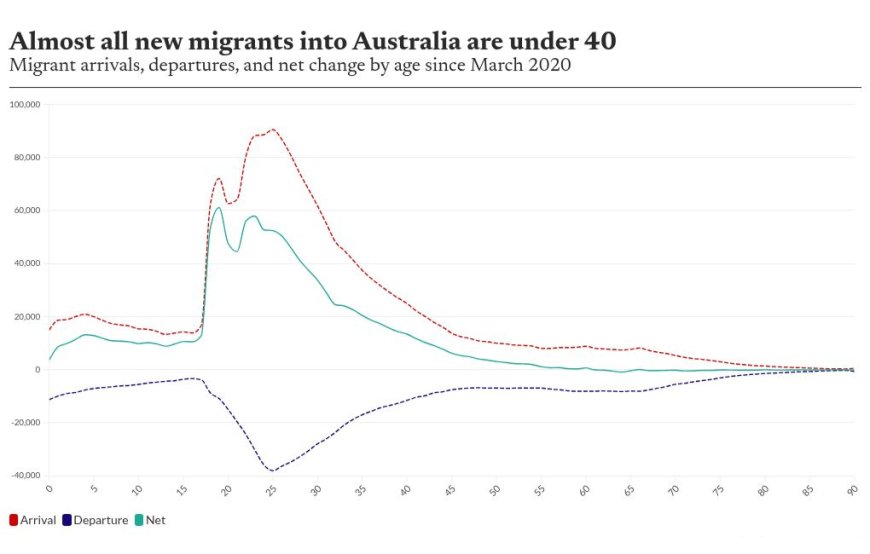Breaking Down Australia’s Changing Migration Trends of 2025
Explore Australia's shifting migration trends with a data-driven analysis. Uncover key visa category changes, demographic insights, and economic impacts in this detailed report.
Understanding Australia's Migration Shift
The latest migration data from the Australian Bureau of Statistics (ABS) provides a fresh perspective on Australia’s migration patterns. Using TableBuilder, a powerful analytical tool, we can compare migration trends before and after the COVID-19 pandemic to separate facts from misconceptions.
Migration Trends: Pre- and Post-Pandemic Comparison
A thorough comparison of migration data over two 17-quarter periods—before and after March 2020—reveals no dramatic surge in migration intake. While recent headlines suggest an overwhelming spike, the data shows only a 3% net increase in migration. Between these periods:
-
Pre-pandemic net migration: 1.06 million
-
Post-pandemic net migration: 1.09 million
The apparent spike can be attributed to a concentrated intake of international students over the past 18 months, compensating for the lower admissions during the pandemic. This influx was necessary to stabilize the education sector, which had been significantly impacted by border closures and travel restrictions.

Visa Category Shifts: A Changing Migration Landscape
Examining visa categories highlights a redistribution rather than an increase in migration numbers. The changes in visa allocations have played a crucial role in addressing labor shortages and economic growth:
-
International Students: A significant increase in student visa grants has bolstered Australia's education sector. This category remains a critical revenue source for universities and also contributes to the labor market, as students are allowed to work limited hours while studying.
-
Temporary Visitors: A noticeable decline in temporary visitor visas is in line with Australia’s economic strategy to prioritize visas that contribute to the workforce. Temporary visitors typically do not have work rights, making them a less favorable category in an era of economic recovery.
-
Working Holiday Makers (Backpackers): The demand for working holiday visas has increased, particularly in the agricultural and hospitality sectors, where labor shortages were prominent post-pandemic.
-
New Zealand Citizens: There has been a marked rise in the number of New Zealanders migrating to Australia, largely influenced by economic challenges in New Zealand. Many have moved to Australia in search of better job opportunities and living conditions.
Australian Migration Patterns: Who Comes and Who Leaves?
Migration trends are often measured in net terms, balancing arrivals and departures. A closer look at demographic data reveals some key trends:
-
Young Migrants Dominate: About 82% of net new migrants are under 40, ensuring long-term workforce participation and economic contribution. Younger migrants are also more likely to assimilate successfully and contribute to various sectors, including healthcare, technology, and skilled trades.
-
Age 25: A Key Migration Year:
-
Arrivals: Many postgraduates (32%) enter Australia for higher education, while some individuals qualify for skilled migration (13%) or working holiday visas (9%). This age group also includes Australians returning from overseas, accounting for 13% of arrivals.
-
Departures: The most common age for leaving Australia is also 25. This is mainly driven by young Australians (33%) seeking work experience abroad and international students (16%) finishing their studies and returning home.
-

Economic and Social Implications
Australia’s migration strategy is economically driven, focusing on young, skilled migrants to sustain workforce demands. Factors influencing migration include:
-
Cost of Living Pressures: Rising housing costs and living expenses have encouraged some Australians to relocate to more affordable regions or work remotely from lower-cost countries.
-
Workforce Integration: Migration policies are designed to attract younger individuals who can contribute to the economy over the long term. The emphasis is on ensuring migrants have the necessary skills to support key industries and address labor shortages.
-
International Education Boom: The surge in student visas has brought financial relief to universities while also supplying labor for service industries.
-
Shift in Migration Policies: Policies are being adjusted to encourage skilled workers and deter non-contributing visa categories, ensuring that migration remains beneficial for Australia’s economy.
Data vs. Perception
While migration remains a politically charged issue, data-driven insights challenge the narrative of a crisis. The shifts in visa categories and demographic patterns reflect strategic adjustments rather than an unsustainable surge in numbers. Understanding migration through empirical data rather than sensational headlines allows for better policy decisions and economic planning. The trends indicate that migration is evolving in response to economic and workforce demands, ensuring a balanced and sustainable approach for Australia’s future.
What's Your Reaction?
 Like
0
Like
0
 Dislike
0
Dislike
0
 Love
0
Love
0
 Funny
0
Funny
0
 Angry
0
Angry
0
 Sad
0
Sad
0
 Wow
0
Wow
0









































































































